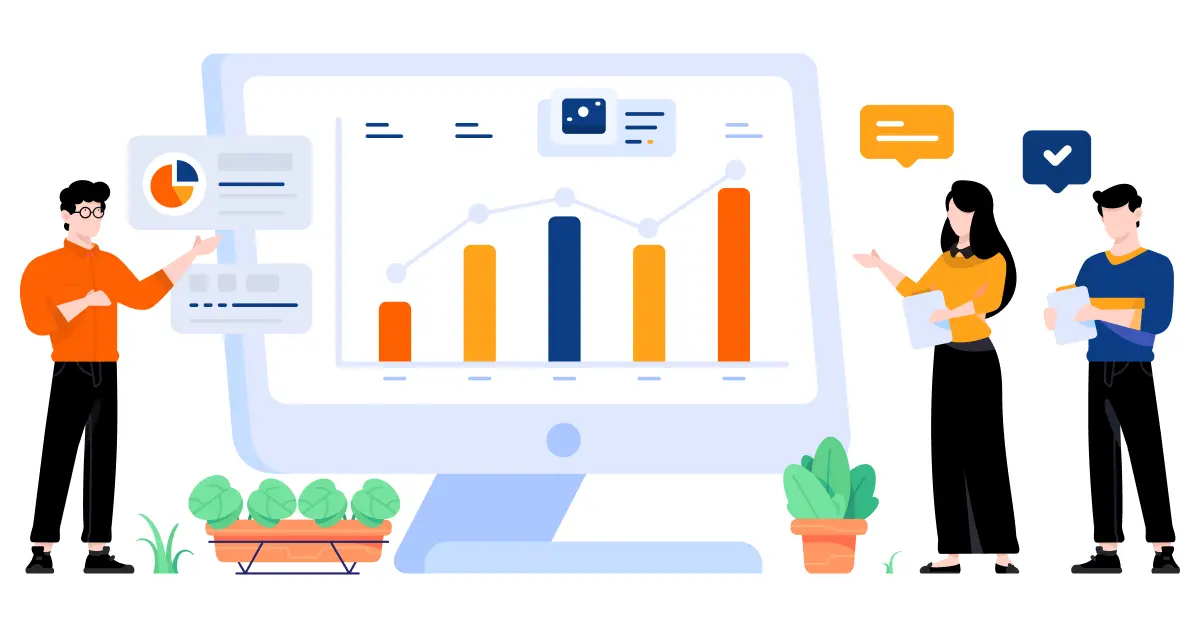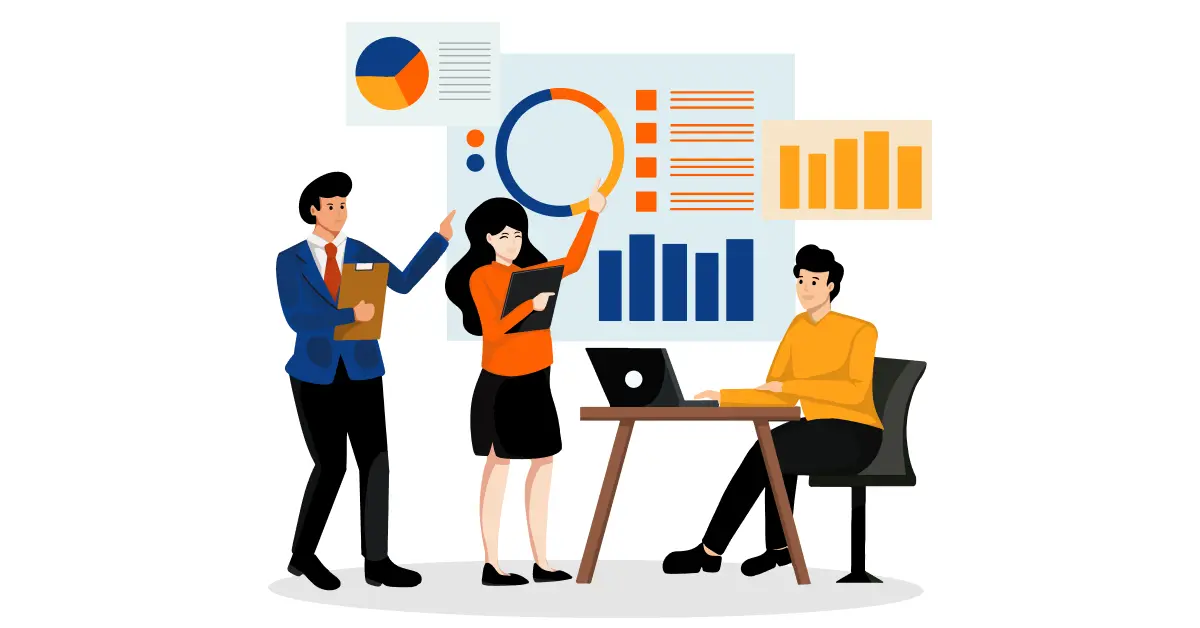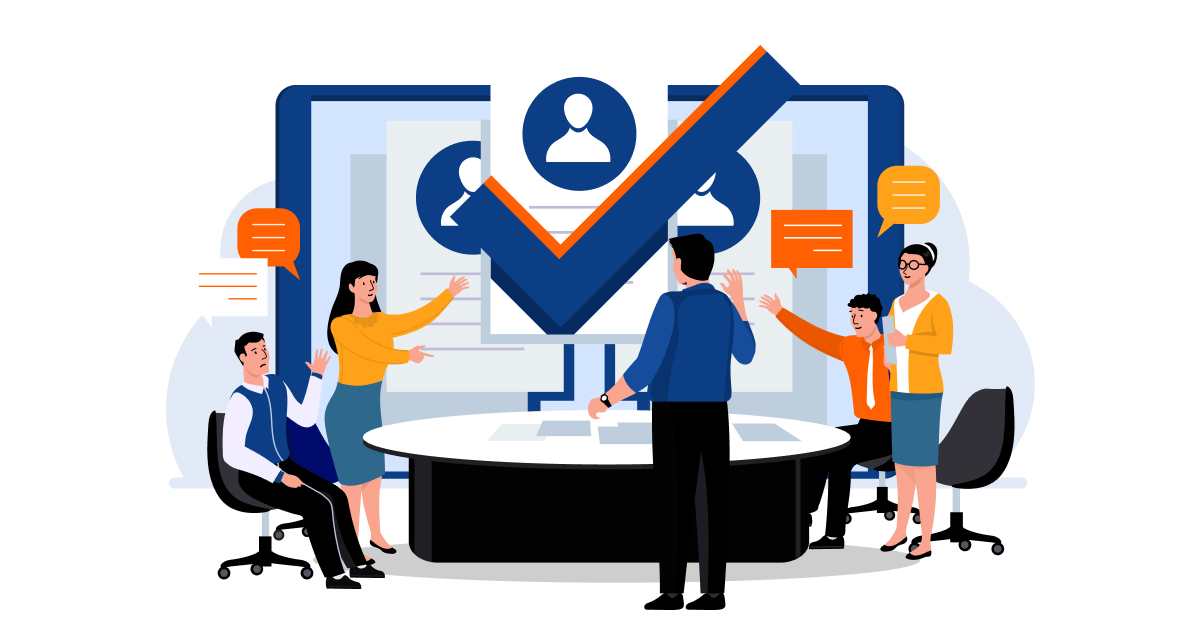
Workforce analytics, also referred to as people analytics, has risen to the occasion to curb the challenges faced by various businesses hoping to make sound strategic human capital decisions in the current world. People analytics is the analysis of the data in relation to workforce behavior with the aim of improving workforce planning and performance, as well as redesigning the performance management systems to retain the best performers in an organization. Here, the author describes various people analytics approaches, the value they add, and how to achieve the implementation process to provide HR leaders with key insights into HDR strategy.
Table of contents
What is People Analytics?
Workforce analytics, also known as people analytics, involves gathering, analyzing, and interpreting employee data to guide strategic human resource management decisions. The report presents a clear picture of the existing workforce and assists HR leaders and managers in analyzing different employee trends, including engagement, performance, and turnover.
Using such data can improve workforce management, manage issues like staff turnover, and much more while increasing overall data protection and compliance. Workforce analytics solutions for this purpose help provide a simplified visualization of such reports and manage the data expounded for further relevant decisions.
Types of People Analytics
1. Descriptive Analytics
Descriptive analytics works with trends of previously collected data to facilitate the understanding of data such as employee performance, attrition rates, and others across an organization. It gives the HR teams groundwork and knowledge of past trends that are vital for the right tactful implementation of people analytics. The use of such tactics assists organizations in creating proper plans for managing the workforce and formulating HR policies that would solve problems of improper employee engagement, high turnover rate, and low productivity.
2. Predictive Analytics
This assists workforce planning and performance management by forecasting future trends using historical data. Predictive analytics, for example, can help identify employees who are likely to leave, thereby bolstering proactive retention initiatives. Insight222 research found that 69% of companies reported people analytics significantly contributed to reaching business outcomes, particularly in areas like employee engagement and retention.
3. Prescriptive Analytics
By suggesting optimal actions, prescriptive analytics enables leaders to make data-backed decisions. Leapmax offers prescriptive insights to streamline HR interventions, such as creating more engaging work environments.
4. Diagnostic Analytics
The “why” behind data trends is examined by diagnostic analytics, which provides answers to issues like high employee attrition and underperforming departments. It’s an effective method for identifying problems that need to be fixed right away.
Benefits of People Analytics
People Analytics offers a range of benefits that contribute to organizational growth and improved workforce management:
1. Enhanced Workforce Planning
People analytics can enable businesses to allocate scarce resources by profiling hiring trends, turnover, and demands. With knowledge of these trends, organizations can acquire and develop the right human capital to meet organizational needs now and in the future, thus optimally matching organizational supply with demand.
2. Better Performance Management
An organization can establish proper and achievable organizational KPIs and real-time tracking through its employees’ performance. This approach positively impacts performance, increases employees’ interest, and reduces staff turnover at high levels because it fosters timely feedback and ensures that employees are motivated toward organizational objectives since they will be part of the success.
3. Informed Decision-Making
With people analytics, the decisions that the HR teams need to make concerning the recruitment, development, and promotion of candidates and employees are well-informed. The solutions for the professionals simplify the presentation of the workforce data and make workforce data easy to comprehend and easy to act upon. This approach allows organizations to better manage talent and gain a more coherent view of the workforce.
4. Improved Employee Retention
Workforce management, Coupled with predictive analytics features, enables the company to forecast areas that are likely to cause turnover, thus preventing it. If organizations implement retention interventions that point towards the specific employees at the workplace, including training, benefits, and workplace adjustments, then organizations can stop high turnover levels and develop a pool of dedicated and efficient employees that will ultimately increase stability rather than constant hiring.
5. Strengthened Data Security and Compliance
Data protection and privacy are vital in people analytics because companies deal with employees’ data, such as GDPR. While implementing people analytics tools, data security ought to be of paramount importance, especially because personal and often very sensitive data is processed. Software such as Leapmax has strong assistant controls for data protection and enables organizations to utilize analytics without the need to overlook compliance issues.
How to Get Started with People Analytics
1. Define Objectives
To develop the goals for people analytics, start by designing the objectives at the organization’s level. Once one has specific goals to work on, each goal, whether regarding minimizing employee turnover, bettering staff procurement strategies, or improving performance management, will be achieved systematically.
2. Select the Right Tools
Invest in a powerful people analytics solution, such as Leapmax, which provides a feature set for efficient data collection, analysis, and visualization. HR leaders may use the platform’s intuitive interface to gain insights without requiring complex technical knowledge. Research from myHRfuture shows that 70% of firms have even seen a rise in the number of people analytics tools, including dashboard techniques and technology, over the last year. In addition, 58% say it will grow in the next 18-24 months, signaling the need for organizations to start using data to make HR decisions.
3. Data Collection and Analysis
Collect information from formats such as performance management products, employee feedback questionnaires & HRIS. Leapmax also makes this data collection process easier and guarantees it analyzes the data without compromising security or breaking compliance regulations. Leapmax has made this possible by safely storing and processing information to provide organizations with insight and enable them to make informed decisions on execution management.
4. Interpret and Act on Insights
Analyze information and work with it to develop specific business strategies. For example, if some divisions have relatively poor levels of EE, prescribe engagement programs that would address the root causes of the problem here. The display of systems integration helps the organizations to address the disruptions, improve employee satisfaction, and improve the strength of the employee to deliver.
5. Monitor and Adjust
It is a continuous process, so there should be an evaluation from time to time. Occasionally assess and optimize plants to guarantee data intelligence remains usable in today’s employee market and supports organizational objectives. As pointed out, if analytics is dynamic enough to respond to new demands, it can be useful in achieving workforce planning goals and helping organizations achieve organizational goals in the long run.
Conclusion
Today, no contemporary organization attempting to build data-driven approaches in HR can afford to ignore people analytics. Through strategic interventions in such principal domains of work, people management, and employee behavior, organizations can develop a positive approach toward the employees to have an effective workforce. This way, the organizations come across as valuable insights to help in making the right decisions for the right growth and formulation of laws in matters that concern the workforce.
Leapmax delivers the most extensive and integrated solution for people analytics, letting businesses build and grow analytics programs with effortless comfort. Its features aimed at improving data gathering and processing, as well as data presentation, help organizations leverage workforce data to drive business success, enable sound decision-making, and promote strategic foresight in 2024 and beyond.







